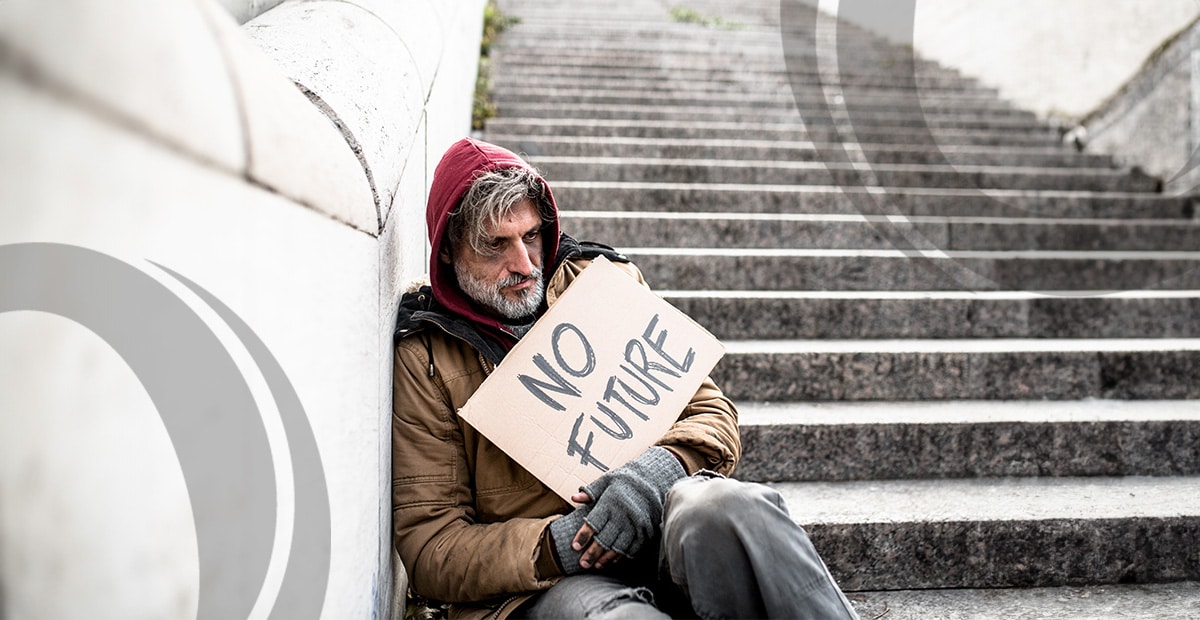Please fill out the details below to receive information on Blue Wealth Events
"*" indicates required fields

We’ve all been sold this vision of retiring near the coast and seen the glossy marketing images from the super funds which show a retired couple walking hand in hand along a deserted beach in Queensland with grey hair and wearing linen clothes. This image is a comforting lie for many Australians. That will happen for maybe the top 5-10% of people.
The uncomfortable reality is that 33% of Australians are at risk of retiring in poverty with the fastest growing group of people who are living in poverty being single women who are renting. This is easy enough to see why when the basic pension is $25,065 or $482 per week. This is under the median rent in every capital city in Australia since rents have soared 42% since the start of the pandemic. For couples, it is not much better with a combined pension of $39,269 per year or around $755 per week. If you own assets worth more than $301,750 your pension is reduced by 4.5 cents for every dollar that exceeds that amount.
What’s worse is that home ownership is falling for each successive age group so our generation will likely end up worse off than our parent’s generation and our kids will be worse off than our generation. We’re quietly heading into this retirement timebomb with the aging population and increasing numbers of people retiring each year. In addition, the fact that we now have increasing lifespans only exacerbates the problems we’re already facing. The stories you hear from pensioners in this situation are heartbreaking, they are ashamed of being a burden to their families and simply suffer in quiet desperation when they should be spending their golden years in freedom and relaxation.
One of the biggest scams in life is paying taxes on money we make, paying taxes on money we spend, and taxes on things we own, that we already paid taxes on, with already taxed money. The madness of the situation is that after all this people find that they’re left with little when they’re too old to continue working.
The average superannuation balances of people aged between 60 and 64 are $402,838 for men and $318,203 for women. To fund a ‘comfortable’ lifestyle the Association of Superannuation Funds of Australia (ASFA) indicates that you would need a passive income of $50,207 for singles and $70,806 for couples. This is of course assuming you own your home debt-free. Those numbers equate to around $60,000 and $90,000 in pre-tax income today. If we work backwards and assume you have an asset generating 4% yield a single person would need roughly $1.25m (in addition to having their own home fully paid off) and a couple would need $1.75m. When compared to the actual superannuation balances it becomes quite clear that we’re short by about 300% ($855,000) for singles and 244% ($1.03m) for couples. If you’re not retiring today then those numbers will need to be significantly higher.
The real issue again comes back to a fundamental failure of the monetary system. If we were to track the pace at which new money is printed in Australia, we would find that it’s inflating at around 10.5% per annum. Let’s compare that to asset inflation.
The share market goes up by 9.8% per annum, houses go up by about 7% per annum (if we add in rental yields the total return also rises to around 10-10.5% per annum), and gold rises by about 8.5% per annum when measured in AUD. All these assets approximate the growth rate at which new money is ‘created’ out of thin air in Australia. Funny that?
Yet inexplicably CPI (which the pension is indexed to) only rises at 2.5% per annum. The reason is that the CPI number is fudged and heavily manipulated. For example, when one good rises in price by too much they will substitute another good that has risen less. So instead of a sirloin, they might substitute hamburger meat or instead of butter, they might substitute margarine. Some goods have genuinely fallen in price though. Anything that can be made digital and transformed from a physical good to electrons on a circuit has become cheaper. These include music, which is streamed instead of purchased on CDs, software, books online compared to paper versions, etc. Most importantly the CPI number does not include asset prices which means that it is not truly representative for anyone who wishes to purchase assets.
If we accept that the real rate of inflation (as indicated by asset prices) is closer to 10% than 2.5% then it’s clear that our super funds are little more than a savings technology rather than an investment. What good is having $2 million in your super when a cup of coffee costs $100 or a steak costs $500?
The good news is that the easiest way to beat this hurdle rate is using leverage or borrowings to invest in an asset like property. For a fairly typical property using a 10% deposit rate, the internal rate of return is better than 13%, good properties will end up being around 20% over the long term which comfortably beats the real rate of inflation. Other than this you would need to go further out onto the risk curve and invest in things like tech stocks and cryptocurrencies. For most Australians, property remains the safest and most practical way to escape the poverty trap and have a retirement that looks something like a glossy brochure from a pension fund.
